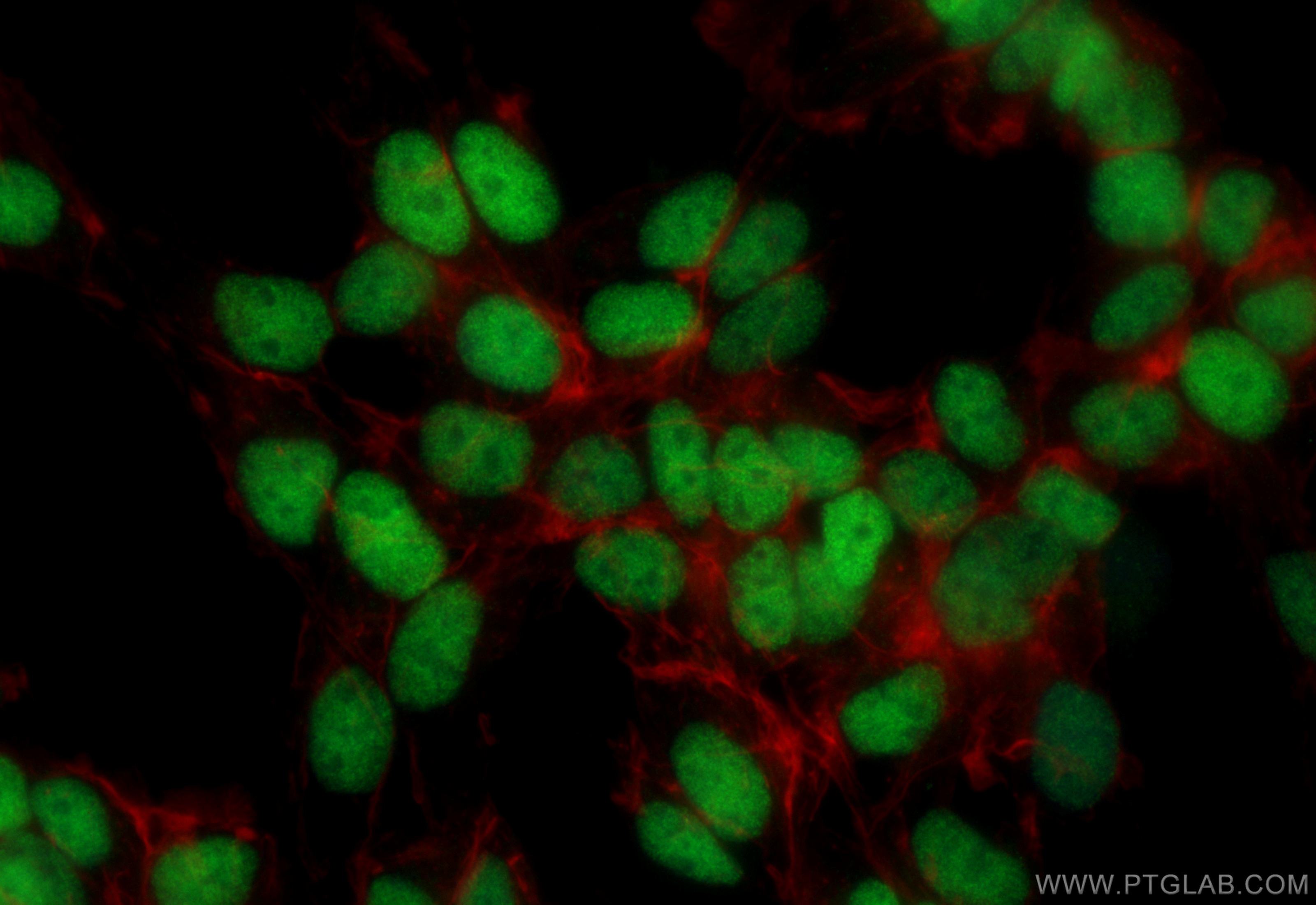验证数据展示
经过测试的应用
| Positive IF/ICC detected in | SH-SY5Y cells |
推荐稀释比
| 应用 | 推荐稀释比 |
|---|---|
| Immunofluorescence (IF)/ICC | IF/ICC : 1:50-1:500 |
| It is recommended that this reagent should be titrated in each testing system to obtain optimal results. | |
| Sample-dependent, Check data in validation data gallery. | |
产品信息
CL488-83784-4 targets Islet 1 in IF/ICC applications and shows reactivity with human samples.
| 经测试应用 | IF/ICC Application Description |
| 经测试反应性 | human |
| 免疫原 |
CatNo: Ag33541 Product name: Recombinant human Islet 1 protein Source: e coli.-derived, PGEX-4T Tag: GST Domain: 1-349 aa of BC031213 Sequence: MGDMGDPPKKKRLISLCVGCGNQIHDQYILRVSPDLEWHAACLKCAECNQYLDESCTCFVRDGKTYCKRDYIRLYGIKCAKCSIGFSKNDFVMRARSKVYHIECFRCVACSRQLIPGDEFALREDGLFCRADHDVVERASLGAGDPLSPLHPARPLQMAAEPISARQPALRPHVHKQPEKTTRVRTVLNEKQLHTLRTCYAANPRPDALMKEQLVEMTGLSPRVIRVWFQNKRCKDKKRSIMMKQLQQQQPNDKTNIQGMTGTPMVAASPERHDGGLQANPVEVQSYQPPWKVLSDFALQSDIDQPAFQQLVNFSEGGPGSNSTGSEVASMSSQLPDTPNSMVASPIEA* 种属同源性预测 |
| 宿主/亚型 | Rabbit / IgG |
| 抗体类别 | Recombinant |
| 产品类型 | Antibody |
| 全称 | ISL LIM homeobox 1 |
| 别名 | ISL1, 240833D7, Insulin gene enhancer protein ISL-1, Isl 1, ISL LIM homeobox 1 |
| 计算分子量 | 39 kDa |
| 观测分子量 | 39-45 kDa |
| GenBank蛋白编号 | BC031213 |
| 基因名称 | Islet 1 |
| Gene ID (NCBI) | 3670 |
| 偶联类型 | CoraLite® Plus 488 Fluorescent Dye |
| 最大激发/发射波长 | 493 nm / 522 nm |
| 形式 | Liquid |
| 纯化方式 | Protein A purification |
| UNIPROT ID | P61371 |
| 储存缓冲液 | PBS with 50% glycerol, 0.05% Proclin300, 0.5% BSA, pH 7.3. |
| 储存条件 | Store at -20°C. Avoid exposure to light. Stable for one year after shipment. Aliquoting is unnecessary for -20oC storage. |
背景介绍
ISL1 belongs to the LIM homeodomain transcription factor family that binds to the enhancer region of the INS gene. It plays a pivotal role in cardiogenesis, and lacking ISL1 expression results in growth arrest or displays profound defects in heart development, including atria, ventricle, and the inflow and outflow tracts. Ubiquitinated probably by WWP1 E3 ubiquitin ligase; ubiquitination is followed by protein degradation.
实验方案
| Product Specific Protocols | |
|---|---|
| IF protocol for CL Plus 488 Islet 1 antibody CL488-83784-4 | Download protocol |
| Standard Protocols | |
|---|---|
| Click here to view our Standard Protocols |


